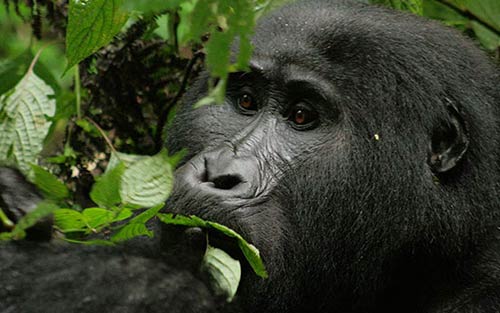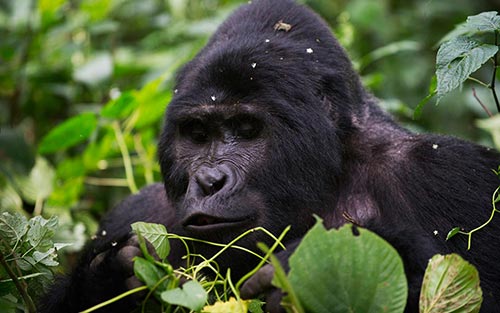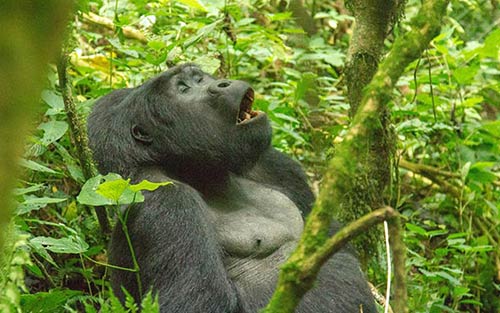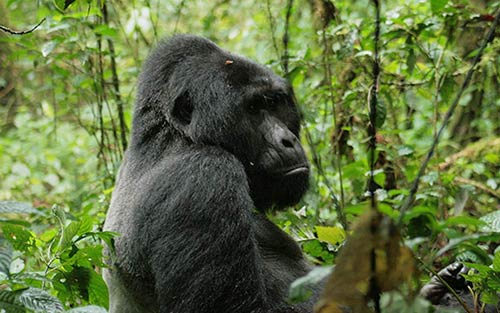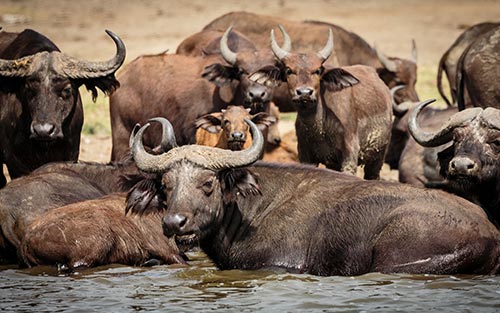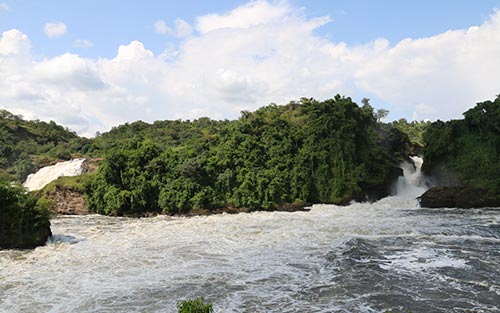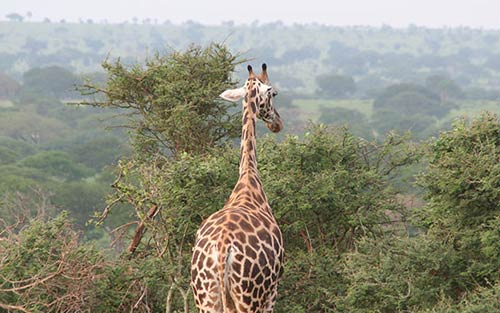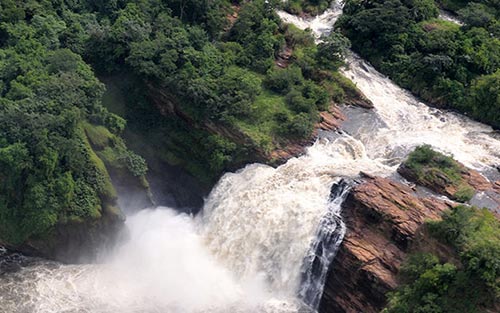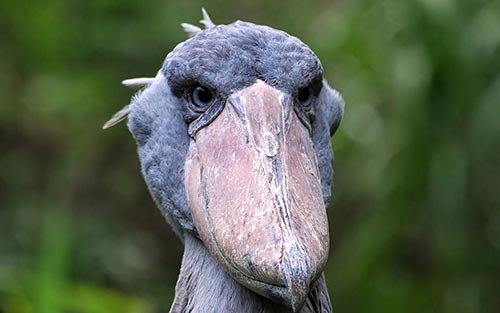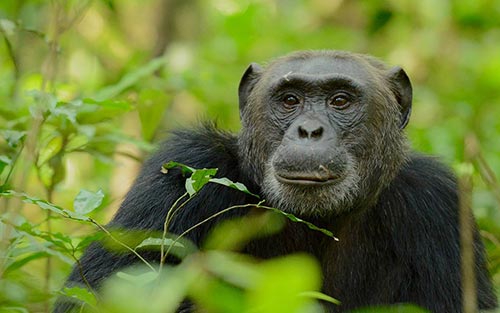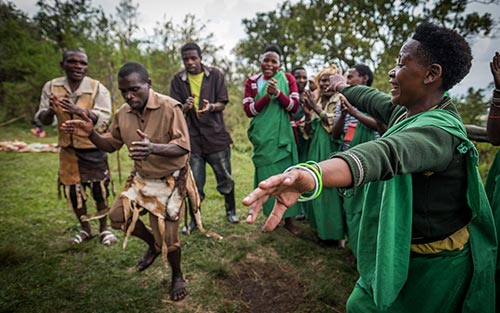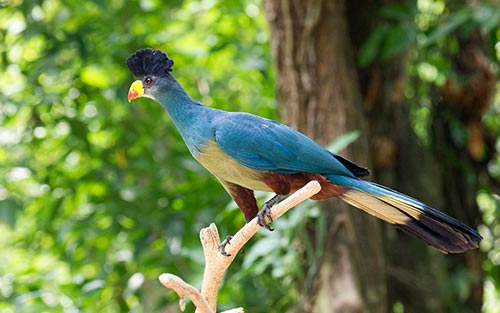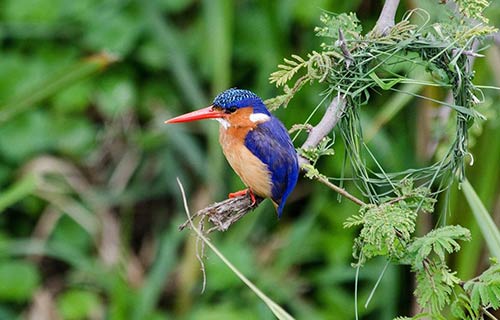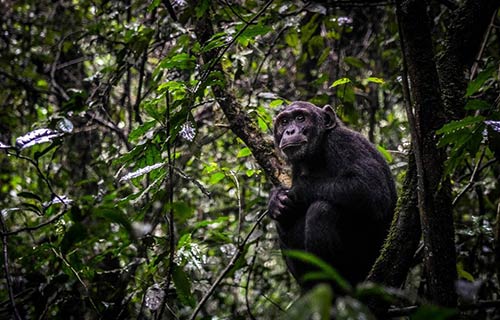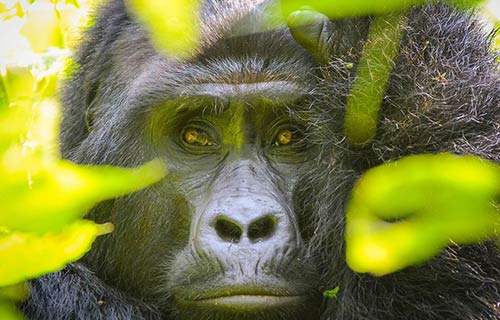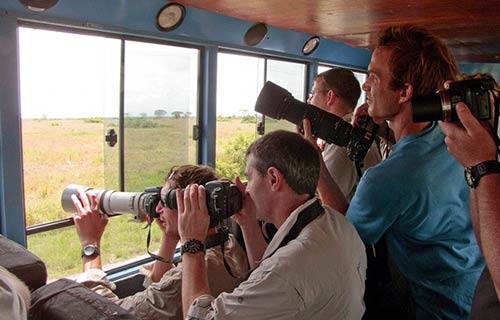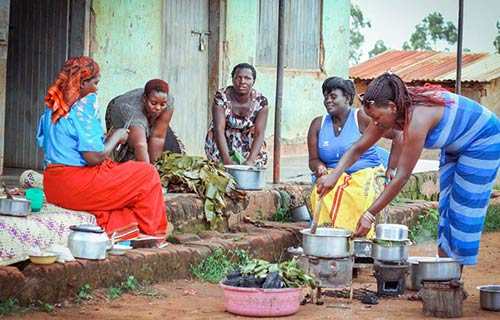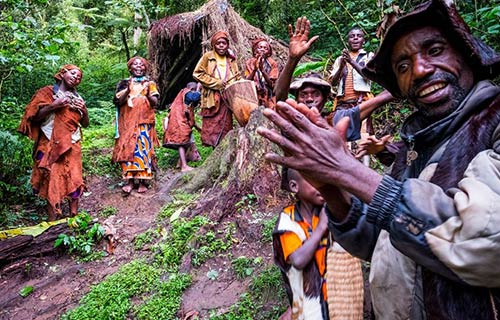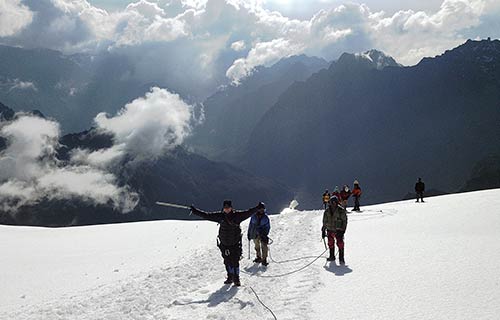Bwindi Impenetrable Forest
Home to more than half of the world’s mountain gorillas
Bwindi Impenetrable Forest is one of the richest rainforest in the world housing a number of distinctive species and most famously is home to more than half of the world’s last 1000 remaining mountain gorillas.
Evidence indicates that during the last glacial period (between 25,000 and 12,000 BC), the climate of much of tropical Africa was much drier and cooler than at present. Most of today’s East African Forests were Savannah during this period. Montane and lowland forests, and therefore plant and animal species, were restricted to a few refuges where the climate remained suitably moist. Available information suggests that the most important East African forest during this period was in eastern DR Congo and western Uganda, and it is likely that Bwindi Impenetrable Forest was part of this refuge. Information supporting this theory includes data qualifying Bwindi Impenetrable Forest as the richest forest in East Africa for birds, butterflies, and probably mammals. It is also a forest housing numerous endemic species of plant and bird species. Logically, as the distance from Bwindi Impenetrable Forest increases, medium altitude and montane forest floras and faunas become progressively impoverished.
In more recent times the impenetrable forest has become the site of important scientific and conservation research, concentrating on lower altitude montane forest environments and ecological relationships. In 1991, generally because of its immense floral and faunal diversity and specifically because it is a last refuge for one-half of the world’s remaining Mountain Gorilla population, the impenetrable Forest was upgraded from Forest reserve status and became Bwindi Impenetrable National Park.. a comprehensive conservation management plan including controlled visits to gorillas, conservation education, and local community revenue-sharing programs, make Bwindi a model park to watch as it develops and evolves.
Mountain Gorillas
The Gorillas in Bwindi Impenetrable Forest are the mountain gorillas known as Gorilla beringei subspecies. Gorillas are mainly terrestrial and quadruped – they walk on the soles of their hind limbs, but pivot on the knuckles of their forelimbs. Gorillas are predominantly herbivorous, feeding mainly on the leaves, stems, and roots of specific plants. Of the great apes, the gorilla shows the most stable grouping patterns. The same individuals travel together, typically, for years at a time. Groups are led by an adult male or “silverback” however all “silverbacks” are not successful enough to ultimately gain leadership of the group. All males as they mature, develop very distinct male characteristics including an impressive silver saddle that extends across their back from shoulder to rump.
Good Read: Uganda Gorilla Trekking
The size of a gorilla group varies from 2 to as many as 35 individuals. Average group size is about nine. In addition to a dominant silverback, the group consists of several adult females, sub adults who will most likely transfer out of their natal group upon reaching sexual maturity, juveniles, and infants.
Female gorillas mature sexually at about 9 years of age. Gorillas do not have a distinctive breeding season; they cycle about every 28 days (comparable to a human female). Gestation is 8 ½ to 9 months. New born infants weigh 4-5 pounds and are totally dependant on their mother. Infants are weaned at about 3 ½ years of age, and females typically give birth at 4 – 5 year intervals. Male gorillas mature later, at 10-12 years of age, but because of competition among males for mates, very few will start to breed before 15 years of age.
Group daily activity patterns follow a relatively simple routine. Awaking in their night nests after daybreak, gorillas begin foraging and continue to feed slowly and selectively until a mid-morning rest period during which individuals sleep, groom each other, and younger gorillas play. The rest period may last in excess of an hour, after which feeding begins again. An afternoon rest period follows several additional hours of feeding. The group wraps up the day with another feeding bout and just before dusk, each gorilla (excluding infants) begins constructing a nest to sleep in for that night.
The gorilla tourism program, an integral component of the Mountain Gorilla conservation programs, compliments the daily activity patterns of the gorillas. Beginning early in the morning (8.30 am) tourists hike to that point in the forest where a gorilla group was contacted the day before. Following trails through dense forest and over rough terrain, the previous nights nests are discovered and the fresh trail is pursued. Once located tourists have an hour to observe the gorillas.
There are now three groups of gorillas to be trekked in Bwindi namely; the Mubare group comprising of a group of 10 individuals (1 silverback, 5 female adults, 3 juveniles and 1 infant). The Habinyanja group has 20 individuals (1 silver back, 2 black back, 8 female adults, 8 juveniles, 1 infant). The recently formed group that separated from Habinyanja is called the Rushegura group with 9 individuals (1 silverback, 1 black back, 4 female adults, 2 juveniles and 1 infant). Each group has a maximum of six trekking permits per day, giving a total of 18 permits per day. Permits can be booked up to 2 years in advance.
Birds & Butterflies
The diversity of birds in Bwindi Impenetrable National Park is extremely high, representing one of the forest’s avifauna in Africa. The bird list for the park currently totals 334 species, 67 non-forest-dependent species, and 182 forest-dependent species. Thirteen of these species occur nowhere else in Uganda, seven are not known to occur anywhere else in East Africa, and 17 are known for East Africa only in Bwindi and one or two other East African forests.
A total of 202 species of butterflies have been reported to occur in Bwindi Impenetrable National Park, and additional species, undoubtedly, occur. Eight of these species are regional endemics. This wealth of butterflies is indicative of the forest’s overall biodiversity and conservation importance.
Best Time To Visit
June, July, August and September are the peak months as they are generally dry (though rain can fall at any time), and coincide with school holidays. This is the best time to visit Uganda, but book well in advance, especially if tracking gorillas – as gorilla permits will sell out months in advance. Read More
Getting a Gorilla Permit
The cost of a Uganda gorilla permit is US$600 per person for one day and one hour with a selected mountain gorilla group. This is the mid-range price point compared to Rwandan gorilla permits that cost $1500 and DRC gorilla permits cost $400. Find out how to acquire a gorilla permit.
Our Most Popular Uganda Safaris
Tailored to suite your travel style and calendar
UGANDA SAFARIS
There's not just one way to travel. There just as many different ways to explore a new place as there are travelers in the world.
We've made this inspirational page to help you more clearly imagine and then create your ideal trip, making it easier to choose the perfect vacation that fits your needs.
Would you rather travel solo and off the beaten path, or do you want a guide to take you through some of the most famous sites in the world? Can't imagine going more than a few hours cut off from the world, or are you dreaming of wide open spaces without another person in sight?
Whatever you prefer, you can find it and more in the dozens of travel ideas for every continent prepared by our local agents. Take a look and find out which one inspires you!





